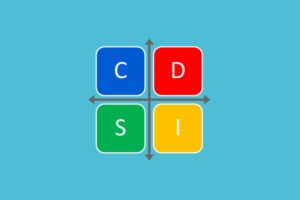So you’ve identified the best candidates for a position, interviewed them, made an offer, and the offer was accepted. Building great teams doesn’t end there. Integrating a high quality onboarding program into your hiring process is an essential next step when bringing on new talent. New hires are more likely to stay with a company after a successful onboarding experience, so this process is an essential HR function for employee retention, not to mention the motivational value when an employee feels welcomed, valued, and integral in a new role.
There are 4 phases of onboarding new hires that make the transition to a new workplace much smoother. These include:
- Orientation: introducing them to staff and showing them the facilities,
- Role training: familiarise them with their responsibilities and those of their teammates,
- Transitioning: acclimating to a permanent position with good team communication, and
- Job development: setting long term goals and career aspirations.
The first day in a new job can be scary, and a company’s onboarding experience can be the difference between a new hire wanting to run for the hills versus being ecstatic to hit the ground running. So how can you make the most of your onboarding experience?
What Does Onboarding Mean?
“Onboarding,” also known as organisational socialisation, refers to the process whereby new employees within a business culture acquire the necessary knowledge, skills, and behaviours to become effective members of their team.
This process includes a lot more than filing paperwork and documents and it lasts a lot longer than a new hire orientation. There are many components to the onboarding process which means it can last anywhere from one week to a whole year. Most successful onboarding processes last at least a few months. Ideally, employees feel competent and confident once the onboarding process is complete.
Why Onboarding Staff Successfully is So Important
A strong onboarding process is important because it acclimates a new hire to their role and engages them with the culture and organisational goals, creating employees that are committed to the success of the business. If implemented effectively, it increases employee retention and significantly improves employee productivity.
Additionally, by providing all the necessary tools, knowledge, and skills an employee needs to do their job and integrate seamlessly into their team and the larger workplace culture, they are more likely to thrive in their role. By the end of their onboarding process, your new hire should not only know what’s expected of them, but they should be adding real value to your company as a whole.
The key to a successful onboarding experience is having standardised and consistent, tried and tested processes in place. This can be developed in house or outsourced to a specialised HR Consultancy who have the knowledge on the key functions of leadership development, workplace and team profiling assessments.
The 4 Phases of Staff Onboarding
As soon as a new hire accepts a position offer, the onboarding process begins. The first steps are to get any paperwork or documents signed to legally accept them onto your team. An employee’s first day on the job shouldn’t have them jumping into the work you hired them to do. It is the beginning of what will hopefully be a long and mutually beneficial relationship, so you should take the time to get to know them and let them know who you are.
Orientation
The first phase of orientation includes an introduction to the organisation, their team members, senior management, and includes a tour of the facility within which they’ll be working. The orientation also includes acquainting them with the employee handbook, policies, procedures, compliance materials, benefit information, and any other essential paperwork to be filled out by the new hire. Sharing the company’s mission, vision, and values are an important first step to familiarise them with company culture and expected behaviours.
Training and orientation methods used in this phase are usually standardised program-based learning and may include lectures, initial socialisation, and question and answer sessions.
Role Training
The second phase of onboarding is to train an employee in their day to day activities, outlining and discussing performance expectations and providing job specific tools that a new hire will need. This process can include job shadowing and safety training which enables them to gain full knowledge and a solid understanding of their role and how it is performed in this organisation to become a productive member of the team.
In addition to this, it’s important at this stage to introduce business objectives that relate to their role and their team’s role, including explaining the responsibilities and competencies of other team members and how they will be interacting with them.
Transition
After what is usually a predetermined duration in a new role, an employee will enter the transition phase of onboarding, where they go from the probationary period to a permanent position. At this stage, their primary source of development and support will shift from HR and now be derived from their direct supervisor. HR generally takes a step back, though they still play a role in employee relations and interpersonal dynamics.
It is integral that line managers have the skills to support new employees with effective communication and strategies for improvement and growth. They can do this using a blended training approach, mixing different methods and feedback to create open communication within their team.
Job Development
The fourth and final approach to onboarding is job development. This includes creating a plan for ongoing training by focusing on personal and career growth. By creating a long term plan with their line managers, the new employee envisions how they can positively contribute, continue productively, and grow within the organisation.
Tools to implement this stage include completing a competency assessment, creating learning paths, individual development plans, and setting personal and professional goals to work towards.
What Tools Can Help You Across Each Stage of Onboarding
There are a number of tools to help you with the new employee onboarding process that help to strengthen, streamline, and guide new employees to their roles. In today’s competitive business landscape, offering new hires a positive onboarding experience is essential to employee retention.
The tools you use for your onboarding may depend on your budget and how specialised you require your process to be. There are many applications and software, both free and paid, available to human resources personnel and line managers to help them with their onboarding experience. In addition to these, there are tools that can be created within your organisation:
- DISC personality tests – not only a tool for recruitment, HR Profiling Solutions DISC personality tests can help new hires and team members improve understanding and communication and learn how to adjust their behaviour to suit others’ styles and specific situations.
- Checklists and forms – getting all the necessary forms read, understood, and signed, and having checklists that ensure every part of the process is completed.
- Virtual and interactive tours – these can be done at the pace of the individual and can provide more in-depth information about the organisation.
- Newsletters – to help them get to know the organisation and keep up with relevant events, offerings, and achievements.
- Role play and simulation – training tools to familiarise new hires with the job role.
- Videos – action how-to’s to introduce them to their role and provide necessary information in a quick and engaging way.
- Informational posters with QR-codes – leading employees to interact to acquire more information about certain subjects if they want to delve deeper.
- Blended learning experiences – a way to understand the learning styles of a new hire and make the process more fun.
- Team building activities – shared meals, sports competitions, or other game-based or problem-solving activities encourage interaction, communication, and relationship building.




